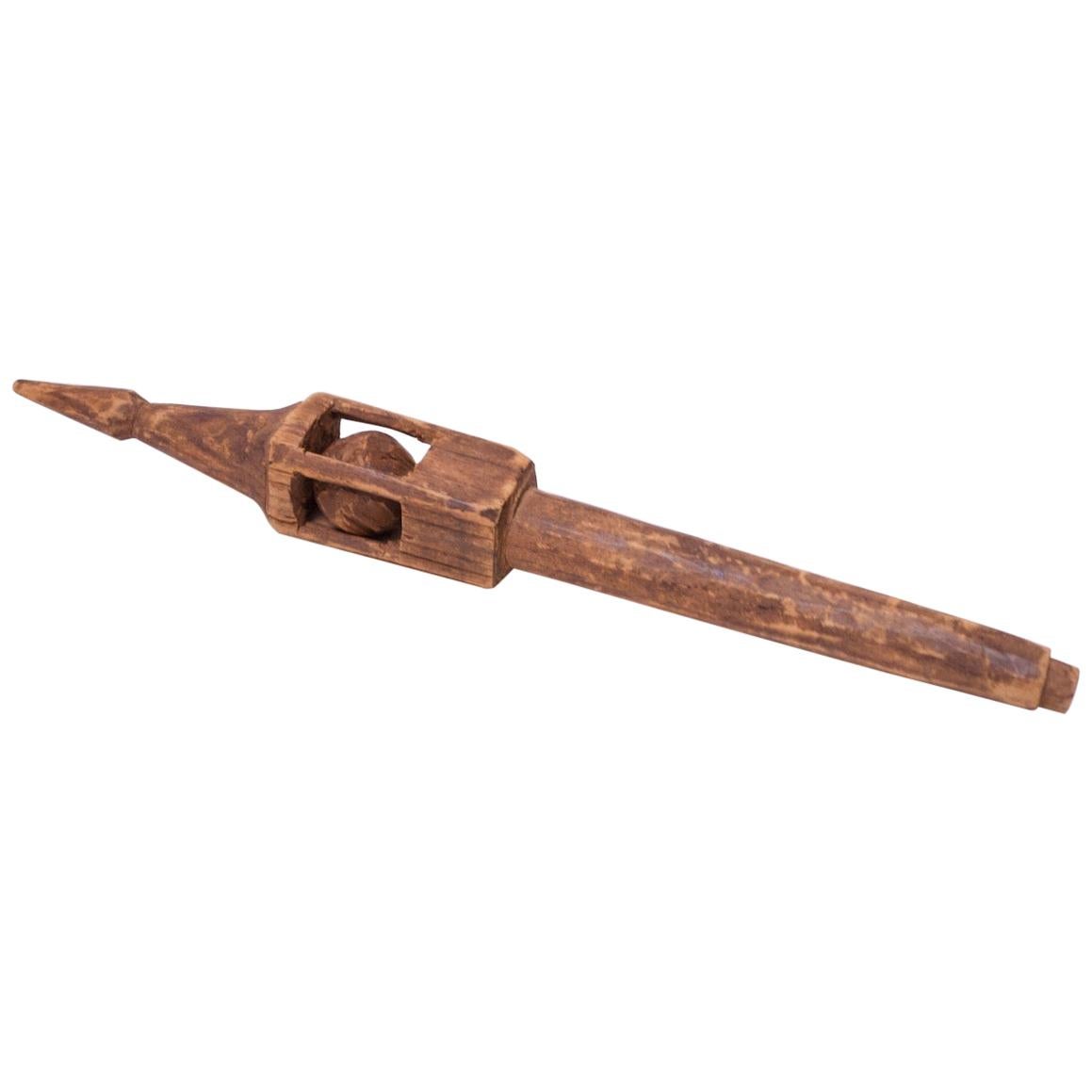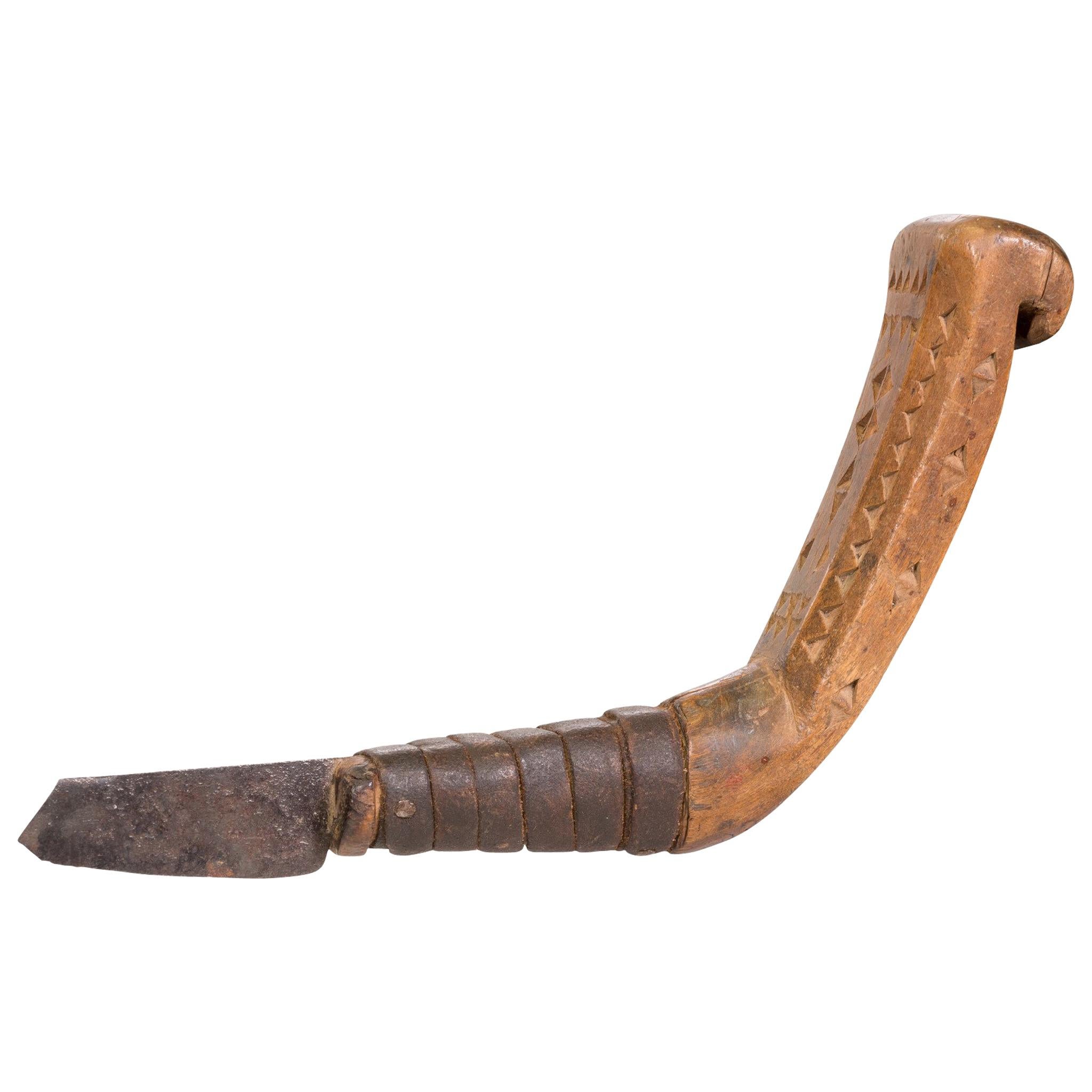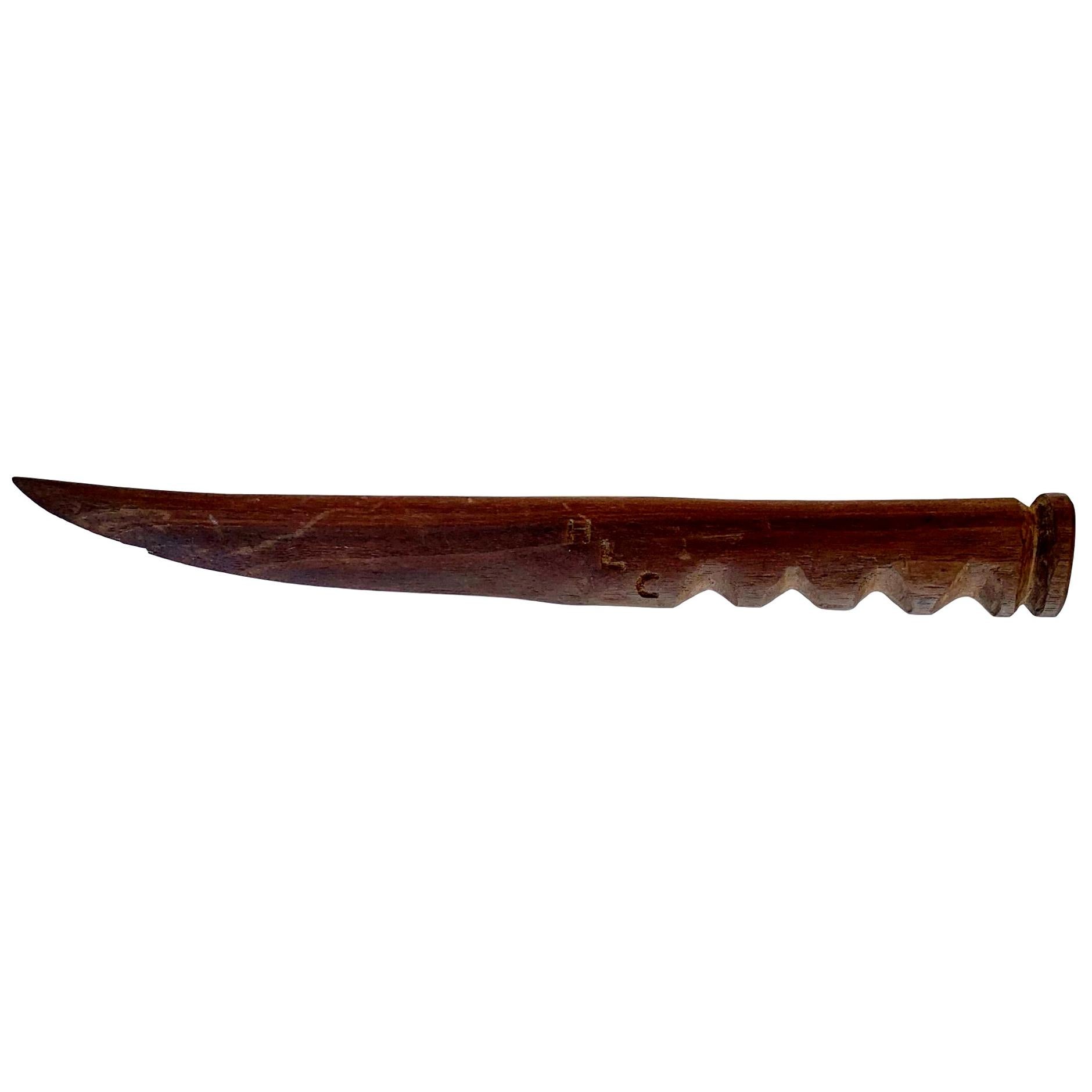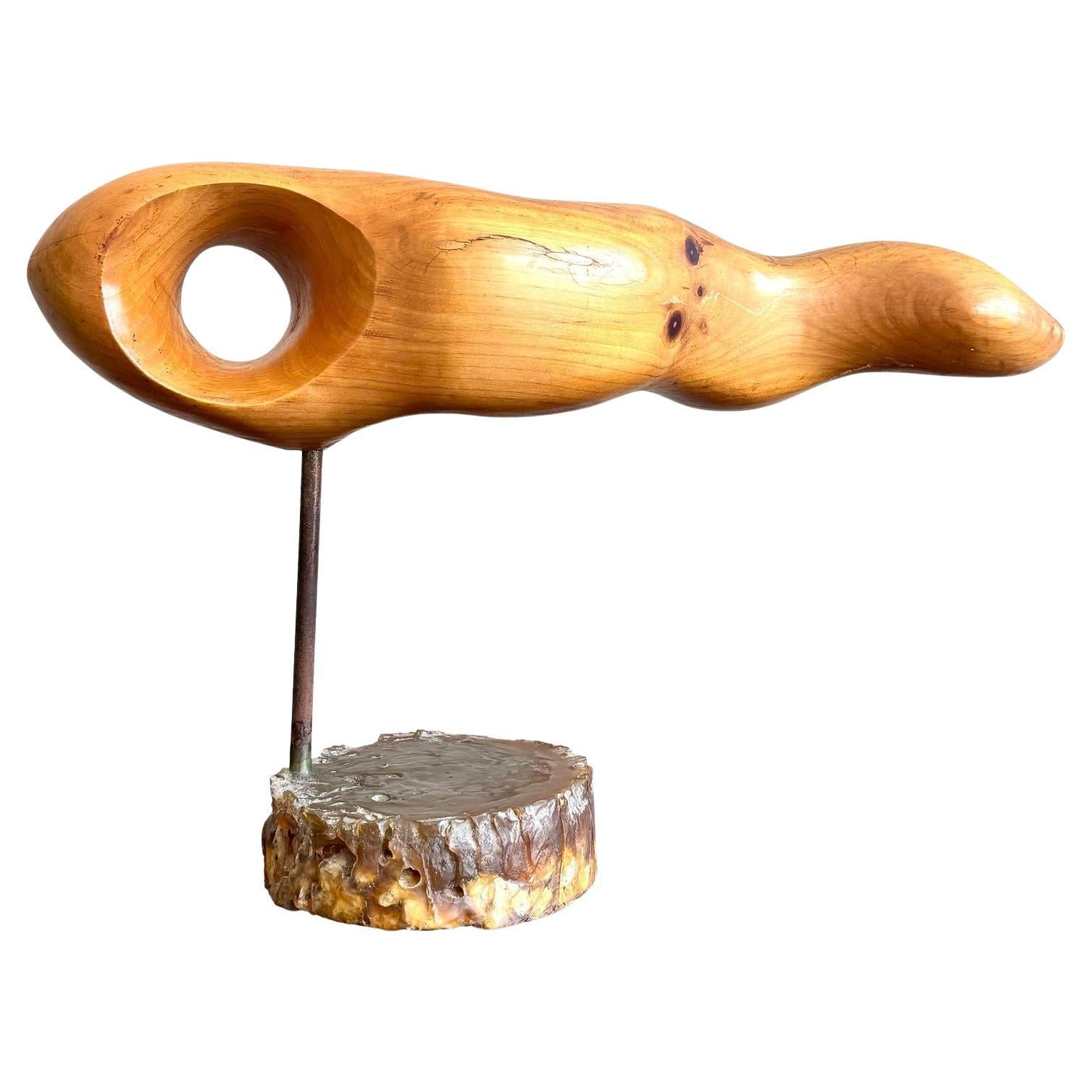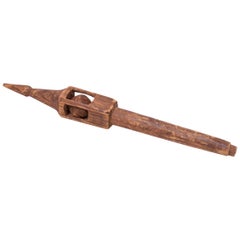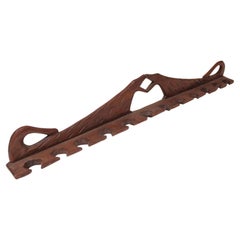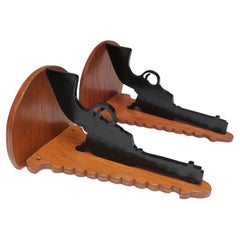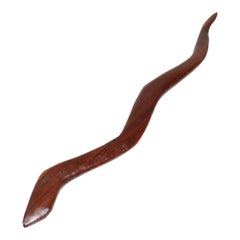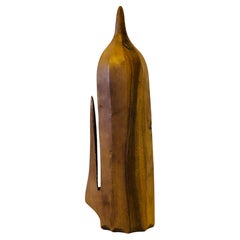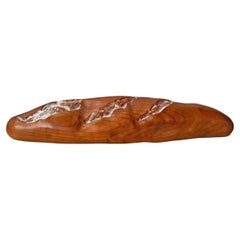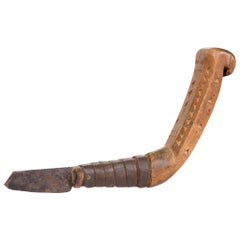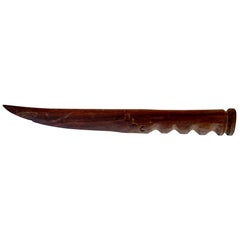Items Similar to Large Folk Art Pocket Knife Store Display
Want more images or videos?
Request additional images or videos from the seller
1 of 16
Large Folk Art Pocket Knife Store Display
$1,200
£906.11
€1,051.28
CA$1,686.38
A$1,878.86
CHF 980.85
MX$22,811.89
NOK 12,328.71
SEK 11,653.62
DKK 7,847.64
About the Item
One of a kind large scale pocket knife (24" L), likely used as a store display / sign composed of a painted and carved walnut handle / bolster with a poplar blade. Blade manually folds into the handle with a smooth movement. Inlaid lanyard hole and standoffs add a nice detail.
Excellent, vintage condition with no flaws to note.
Closed: H 6.75" x D 2.1" x L 23.25"
Opened: H 21.5" x D 2.1" x L 24.25".
(Listed dimensions reflect the blade extended out.)
- Dimensions:Height: 21.5 in (54.61 cm)Width: 24.25 in (61.6 cm)Depth: 2.1 in (5.34 cm)
- Style:Folk Art (Of the Period)
- Materials and Techniques:
- Place of Origin:
- Period:
- Date of Manufacture:circa 1970s
- Condition:Wear consistent with age and use.
- Seller Location:Brooklyn, NY
- Reference Number:1stDibs: LU1444212868792
About the Seller
5.0
Platinum Seller
Premium sellers with a 4.7+ rating and 24-hour response times
Established in 2007
1stDibs seller since 2015
680 sales on 1stDibs
Typical response time: <1 hour
- ShippingRetrieving quote...Shipping from: Brooklyn, NY
- Return Policy
Authenticity Guarantee
In the unlikely event there’s an issue with an item’s authenticity, contact us within 1 year for a full refund. DetailsMoney-Back Guarantee
If your item is not as described, is damaged in transit, or does not arrive, contact us within 7 days for a full refund. Details24-Hour Cancellation
You have a 24-hour grace period in which to reconsider your purchase, with no questions asked.Vetted Professional Sellers
Our world-class sellers must adhere to strict standards for service and quality, maintaining the integrity of our listings.Price-Match Guarantee
If you find that a seller listed the same item for a lower price elsewhere, we’ll match it.Trusted Global Delivery
Our best-in-class carrier network provides specialized shipping options worldwide, including custom delivery.More From This Seller
View AllNautical Folk Art Hand Carved Wooden Whimsy
Located in Brooklyn, NY
American whimsy with traditional 'ball in cage' decoration, all carved and whittled from one continuous piece of wood, circa early 20th century. The bottom tip suggests that this pie...
Category
Vintage 1910s American Folk Art Nautical Objects
Materials
Wood
$300 / item
Folk Art Dual Dog Pipe Holder
Located in Brooklyn, NY
Hand-carved wooden pipe holder with twelve slots for pipes (circa 1930s, USA).
Crude design (figures themselves are ambiguously two dogs meeting at the jaws).
Nice patina/age present...
Category
Vintage 1930s American Folk Art Animal Sculptures
Materials
Wood
Pair of Hand-Carved and Painted Folk Art Pistol Wall Brackets / Corner Shelves
Located in Brooklyn, NY
Pair of Folk Art hand-carved and painted revolver/pistol/handgun trade signs/wall brackets/corner shelves (ca. 1950s, USA).
All original black paint against stained plywood mounts su...
Category
Vintage 1950s American Folk Art Wall Brackets
Materials
Plywood, Paint
American Folk Art Hand-Carved Rosewood Snake
Located in Brooklyn, NY
Folk Art hand-carved rosewood snake (ca. 1940s, USA). Attractive two-tone rosewood variations (rich brown tones throughout with two contrasting light patches).
Very good, vintage con...
Category
Vintage 1940s American Folk Art Animal Sculptures
Materials
Rosewood
Folk Art Tree Branch Tabletop Easel
Located in Brooklyn, NY
Tabletop easel composed of tree branches nailed together (ca. Mid-20th century, USA).
Wonderful American Folk Art craft in the Adirondack / Rustic styl...
Category
Vintage 1950s American Folk Art Easels
Materials
Metal
Long Folk Art Articulated Flexible Carved and Hand-Painted Snake Sculpture
Located in Brooklyn, NY
Charming folk art carved articulated snake sculpture crafted to mimic realistic snake motion (ca. 1980s, likely South American).
Hand-painted body and facial details present.
Unusual...
Category
Vintage 1980s South American Folk Art Animal Sculptures
Materials
Wood
You May Also Like
French folk art sculpture - A monoxylous sharpening stone case
Located in SOTTEVILLE-LÈS-ROUEN, FR
A sharpening stone case, a monoxylous work of French folk art from the early 20th century. Hand-carved walnut wood, a superb and rare decorative object
Category
Early 20th Century French Folk Art Sculptures and Carvings
Materials
Walnut
$427 Sale Price
20% Off
American Folk Art Baguette
Located in Chicago, IL
Celebrate the whimsical charm of American Folk Art with this hand-carved pine sculpture resembling a baguette, a delightful fusion of creativity and ...
Category
20th Century American Folk Art Sculptures and Carvings
Materials
Pine
Eastern Woodland Crooked Knife
Located in Coeur d'Alene, ID
Eastern woodland crooked knife. Solid handle having an exquisite hand chipped carved American Folk Art style geometric design. The blade is hand forged i...
Category
Antique Mid-19th Century American Native American Native American Objects
Materials
Wood
Hand Carved Wood Knife
Located in Los Angeles, CA
Fantastic wood carving of a knife. Just under 12" in length. Completely made by hand with built in grip. Carved HLC on blade. Interesting tabletop object.
Category
Vintage 1960s American Antiquities
Materials
Wood, Paint
Vintage Boho Carved Wood Sculpture
Located in West Palm Beach, FL
This abstract wood sculpture by James Coutant, dated 2002, is a striking example of organic minimalism. Carved from a single piece of warm-toned wood, its smooth, undulating form res...
Category
Late 20th Century American Minimalist Abstract Sculptures
Materials
Metal
Half Wood and Brass Airplane Propeller Blade
Located in Vienna, AT
Propeller blade, wood with metal edge.
Category
Vintage 1930s German Wall-mounted Sculptures
Materials
Brass
More Ways To Browse
Store Signs
Vintage Knifes
Knife Display
Folding Knife
Pocket Knife
Folk Art House
American Wood Carving
Folk Art Japan
German Wood Carving
Antique Folk Carving
Bird Wood Carving
Large Wood Folk Art Sculpture
Austrian Folk Art
Antique Folk Art Bird
Hanging Wood Carving
Wood Carving 1960s
Folk Art Carved Birds
Folk Art Wooden Head


